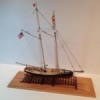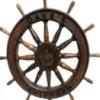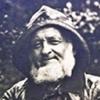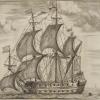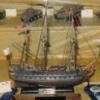-
Posts
815 -
Joined
-
Last visited
Reputation Activity
-
 _SalD_ got a reaction from SawdustDave in Mayflower by SawdustDave - Finished
_SalD_ got a reaction from SawdustDave in Mayflower by SawdustDave - Finished
Superb work Dave. I’ll be following to learn all I can.
-
 _SalD_ got a reaction from Aussie048 in Phantom by _SalD_ - FINISHED - 1/8" scale
_SalD_ got a reaction from Aussie048 in Phantom by _SalD_ - FINISHED - 1/8" scale
The crew finally came to a mutual agreement on the cap rail color and decided to go with a medium brown stain. I wanted a color that was not too dark so all the attachments to the rail would stand out more.
One problem I ran into and didn't realize it until after I installed the cap rail was that I didn't leave enough of an overhang on the outboard side of the bulwarks. While reading ahead in the practicum on how to make and install the chainplates for the deadeyes, I realized the amount of overhang I left (~1/32”) was not going to be enough to install the chainplates through. I thought about just cutting the plates into the bulwarks but thought I would have to cut them in too deep. My solution was, in lieu of making a new rail, to carefully cut the rail off, then split the rail at the stern so I could spread it out a little on each side and then reattached it to the bulwarks. Filled the gap with wood paste and stained it after it dried.
Made and installed the fairleads. I used a small brass strip left over from the pintles for its base and the thin wire from the kit. These were a bit of a challenge to solder. Blackened them and glued them in place.
Made and installed the splash rail. I formed the splash rail on a homemade jig made on a piece of ¾” pine. I had traced the shape of the cap rail onto a piece of cardboard before I installed it (the first time) to layout the splash rail, then used finishing nails to form the curve and push pins to hold the piece in place. I had soaked the wood strips for a few hours before putting them in the jig and then let them dry overnight. Sanded them down to shape, painted and glued them in place. I then filed the notch into the top of the rail.
I measured the location for the two masts from the plans and drilled the holes in the deck. On the advise of my brother-in-law, who is an avid sailor, I put a coin in the bottom of the mast hole, I figured I could use all the luck I can get.
-
 _SalD_ got a reaction from aliluke in Phantom by _SalD_ - FINISHED - 1/8" scale
_SalD_ got a reaction from aliluke in Phantom by _SalD_ - FINISHED - 1/8" scale
The crew finally came to a mutual agreement on the cap rail color and decided to go with a medium brown stain. I wanted a color that was not too dark so all the attachments to the rail would stand out more.
One problem I ran into and didn't realize it until after I installed the cap rail was that I didn't leave enough of an overhang on the outboard side of the bulwarks. While reading ahead in the practicum on how to make and install the chainplates for the deadeyes, I realized the amount of overhang I left (~1/32”) was not going to be enough to install the chainplates through. I thought about just cutting the plates into the bulwarks but thought I would have to cut them in too deep. My solution was, in lieu of making a new rail, to carefully cut the rail off, then split the rail at the stern so I could spread it out a little on each side and then reattached it to the bulwarks. Filled the gap with wood paste and stained it after it dried.
Made and installed the fairleads. I used a small brass strip left over from the pintles for its base and the thin wire from the kit. These were a bit of a challenge to solder. Blackened them and glued them in place.
Made and installed the splash rail. I formed the splash rail on a homemade jig made on a piece of ¾” pine. I had traced the shape of the cap rail onto a piece of cardboard before I installed it (the first time) to layout the splash rail, then used finishing nails to form the curve and push pins to hold the piece in place. I had soaked the wood strips for a few hours before putting them in the jig and then let them dry overnight. Sanded them down to shape, painted and glued them in place. I then filed the notch into the top of the rail.
I measured the location for the two masts from the plans and drilled the holes in the deck. On the advise of my brother-in-law, who is an avid sailor, I put a coin in the bottom of the mast hole, I figured I could use all the luck I can get.
-
 _SalD_ got a reaction from hexnut in Phantom by _SalD_ - FINISHED - 1/8" scale
_SalD_ got a reaction from hexnut in Phantom by _SalD_ - FINISHED - 1/8" scale
A little indecision
The cap rail is complete but not installed. Having trouble deciding what color to paint or stain it. The admiral wants one color, the first mate wants another and the swabbie (moi) wants another. I know it’s my ship but sometimes you got to keep the admiral happy. This indecision however is sort of a blessing in disguise. I found it easier to mount the hawse pipe and the inboard eye bolts and cleats without the rail in place.
I marked the position of the hawse pipes from the plans and then drilled a pilot hole through the hull. Fortunately the drill bit came out right above the waterway. I then enlarged the hole using progressively larger bits. I then glued the hawse pipe to the hull and painted it. I also drilled the four other smaller holes through the bulwarks as mentioned in the practicum. I’m not really sure what these holes are for though.
I blackened the eye bolts prior to installing them. I also used the left over 1/16” square wood strip I used for the bulwark stanchions to test fit the eye bolts and cleats. This gave me a chance to determine the proper hole diameter required and it came in handy to cut the eye bolts to their proper length. I pushed the eye bolt stem through the wood strip and then snipped off the part protruding from the back.
At first I was going to use the cleats as they came in the kit. Then I held one near the stanchion that it was to be mounted on to see what it looked like. The thing looked like it belonged on the Titanic! Needless to say I filed them down a bit to make them look a little more realistic. They’re still a little large but will have to do. Painted them black and glued them in place.
-
 _SalD_ reacted to SawdustDave in Mayflower by SawdustDave - Finished
_SalD_ reacted to SawdustDave in Mayflower by SawdustDave - Finished
Several milestones in every build are worthy of small celebrations. The final hull plank is one of those "Miller Time" moments.
-
 _SalD_ got a reaction from BETAQDAVE in Phantom by _SalD_ - FINISHED - 1/8" scale
_SalD_ got a reaction from BETAQDAVE in Phantom by _SalD_ - FINISHED - 1/8" scale
Thanks Patrick, hope your feeling better.
Decking is complete.
I first tried cutting individual planks, 1/16” wide with the intention of planking the deck with them. This proved, however, a bit beyond my current skill level. What I opted to do was use scribed planking. Not the one that came with the kit but one I made myself. First I made two planking templates, one of the fore deck and one of the aft deck.
I then finished a sheet of basswood ,1/32” thick by 4” wide x 12” long with 4 coats of polyurethane. After the sheet had dried completely I taped the deck planking patterns onto the basswood and using a steel point, traced over the lines to score the wood. Next I painted the decks with a dark brown acrylic paint and them immediately wiped the paint off. The paint came off the polyurethaned areas but stayed in the scored lines. Finally I cut out each deck section.
I like the results but I think I may have scored the wood a little too deep because the caulking lines appear a bit too thick, or maybe I should have used a lighter color paint so they don’t stand out so much. I can't take credit for this method because I did read how to do it in a book whose title and author escapes me right now. Amended 5/28/14 - the book is 'The Built-up Ship Model' by Charles G. Davis pages 106 to 107.
I also chose to cut in the cockpit area and made a template for that planking as well.
-
 _SalD_ got a reaction from trippwj in Phantom by _SalD_ - FINISHED - 1/8" scale
_SalD_ got a reaction from trippwj in Phantom by _SalD_ - FINISHED - 1/8" scale
A little indecision
The cap rail is complete but not installed. Having trouble deciding what color to paint or stain it. The admiral wants one color, the first mate wants another and the swabbie (moi) wants another. I know it’s my ship but sometimes you got to keep the admiral happy. This indecision however is sort of a blessing in disguise. I found it easier to mount the hawse pipe and the inboard eye bolts and cleats without the rail in place.
I marked the position of the hawse pipes from the plans and then drilled a pilot hole through the hull. Fortunately the drill bit came out right above the waterway. I then enlarged the hole using progressively larger bits. I then glued the hawse pipe to the hull and painted it. I also drilled the four other smaller holes through the bulwarks as mentioned in the practicum. I’m not really sure what these holes are for though.
I blackened the eye bolts prior to installing them. I also used the left over 1/16” square wood strip I used for the bulwark stanchions to test fit the eye bolts and cleats. This gave me a chance to determine the proper hole diameter required and it came in handy to cut the eye bolts to their proper length. I pushed the eye bolt stem through the wood strip and then snipped off the part protruding from the back.
At first I was going to use the cleats as they came in the kit. Then I held one near the stanchion that it was to be mounted on to see what it looked like. The thing looked like it belonged on the Titanic! Needless to say I filed them down a bit to make them look a little more realistic. They’re still a little large but will have to do. Painted them black and glued them in place.
-
 _SalD_ got a reaction from aliluke in Phantom by _SalD_ - FINISHED - 1/8" scale
_SalD_ got a reaction from aliluke in Phantom by _SalD_ - FINISHED - 1/8" scale
A little indecision
The cap rail is complete but not installed. Having trouble deciding what color to paint or stain it. The admiral wants one color, the first mate wants another and the swabbie (moi) wants another. I know it’s my ship but sometimes you got to keep the admiral happy. This indecision however is sort of a blessing in disguise. I found it easier to mount the hawse pipe and the inboard eye bolts and cleats without the rail in place.
I marked the position of the hawse pipes from the plans and then drilled a pilot hole through the hull. Fortunately the drill bit came out right above the waterway. I then enlarged the hole using progressively larger bits. I then glued the hawse pipe to the hull and painted it. I also drilled the four other smaller holes through the bulwarks as mentioned in the practicum. I’m not really sure what these holes are for though.
I blackened the eye bolts prior to installing them. I also used the left over 1/16” square wood strip I used for the bulwark stanchions to test fit the eye bolts and cleats. This gave me a chance to determine the proper hole diameter required and it came in handy to cut the eye bolts to their proper length. I pushed the eye bolt stem through the wood strip and then snipped off the part protruding from the back.
At first I was going to use the cleats as they came in the kit. Then I held one near the stanchion that it was to be mounted on to see what it looked like. The thing looked like it belonged on the Titanic! Needless to say I filed them down a bit to make them look a little more realistic. They’re still a little large but will have to do. Painted them black and glued them in place.
-
 _SalD_ got a reaction from piperjoe in Phantom by _SalD_ - FINISHED - 1/8" scale
_SalD_ got a reaction from piperjoe in Phantom by _SalD_ - FINISHED - 1/8" scale
Cut in the scuppers and added the timberheads along the bulwarks.
I drilled the scupper slots as described in the practicum and filed the openings smooth. One thing in hindsight that I should have done differently is not to have installed the waterway until after cutting in the scuppers. I would have set the waterway in place to get the correct location of the scuppers but then removed it so as not to damage it while drilling the scuppers. I used the manila folder paper as described in Chuck’s practicum for the waterway.
The timberheads went in easily. Cut them all a little long and then sanded them down to the height of the bulwarks. I also pre-painted the wood to keep down the number of coats I would need to give them in place. One thing about the bulwarks though, they seem to keep growing. I thought I had sanded them down pretty thin but every time I look at them they get thicker and thicker. Have to stop looking.
-
 _SalD_ got a reaction from Aussie048 in Phantom by _SalD_ - FINISHED - 1/8" scale
_SalD_ got a reaction from Aussie048 in Phantom by _SalD_ - FINISHED - 1/8" scale
Cut in the scuppers and added the timberheads along the bulwarks.
I drilled the scupper slots as described in the practicum and filed the openings smooth. One thing in hindsight that I should have done differently is not to have installed the waterway until after cutting in the scuppers. I would have set the waterway in place to get the correct location of the scuppers but then removed it so as not to damage it while drilling the scuppers. I used the manila folder paper as described in Chuck’s practicum for the waterway.
The timberheads went in easily. Cut them all a little long and then sanded them down to the height of the bulwarks. I also pre-painted the wood to keep down the number of coats I would need to give them in place. One thing about the bulwarks though, they seem to keep growing. I thought I had sanded them down pretty thin but every time I look at them they get thicker and thicker. Have to stop looking.
-
 _SalD_ got a reaction from hexnut in Phantom by _SalD_ - FINISHED - 1/8" scale
_SalD_ got a reaction from hexnut in Phantom by _SalD_ - FINISHED - 1/8" scale
Patrick and Wayne, thank you for the comments on the copper work and to everyone for the 'likes' comments.
I’m still working on how best to do the deck planking. I've been experimenting with a few different methods before attempting the real thing. One thing I am learning is patience. I need to keep reminding myself that I am not in a rush and this ship isn't leaving port anytime soon.
In conjunction with working on the deck I made the rudder hardware and installed the rudder. Using strips of brass I cut from a larger sheet, I first soldered hinge pins (using actual pins) onto the pintles. I kept the brass strips flat while soldering the pins on and then bent them around an 1/8” square piece of wood. This gave me the square shape needed to fit the rudder and stern post. I did the gudgeons the same way except for the pins.
I also wanted to try blackening the brass because sometimes me and a paint brush just don’t get along. I followed directions I found on ‘The Model Boatyard’ website. For my first attempt I was satisfied with the results. I think I need to do a little better job of cleaning the parts before placing them in the blackening agent because there were some areas that did not blacken.
After blackening and prior to installing the hardware I trimmed the pieces to their correct length.
Pintles installed
Rudder installed
-
 _SalD_ got a reaction from hexnut in Phantom by _SalD_ - FINISHED - 1/8" scale
_SalD_ got a reaction from hexnut in Phantom by _SalD_ - FINISHED - 1/8" scale
Coppering is complete, hull and rudder. It was a long night but it’s done. I’m satisfied with the plate size I used, 1/8” x 3/8” (6”x 3’ @ 1/8” scale) instead of the 1/8”x 1/4” as mentioned in the practicum. It looks good (if I do say so myself ) and it also saved me from cutting 50% more plates and there were enough to cut as it was. I don't know if I should I seal the copper with something or just leave it ‘au naturel’. I've read pros and cons about coating the copper so I’m not sure.
Well, on to the decking.
One more thing I wanted to mention, for anyone else building this ship, is that the roll of copper tape that comes with the kit is more than enough to do the hull with quite a bit left over. In the beginning I wasn't sure how much there was so I was reusing bits that I had trimmed from other pieces. You don't need to worry about running out.
-
 _SalD_ got a reaction from hexnut in Phantom by _SalD_ - FINISHED - 1/8" scale
_SalD_ got a reaction from hexnut in Phantom by _SalD_ - FINISHED - 1/8" scale
Coppering the hull is continuing. Had a busy weekend, went to pick up my daughter from college so not too much progress.
One side is complete except for the waterline belt and the other side is partially done. Sorry for the poor picture quality. The one thing I do recommend for this active is the use of an adjustable keel clamp. The one shown in the picture is homemade but I’m sure you can purchase them. It comes in very handy for positioning the hull in various positions to make placing the plates easier.
I do have another question on the plank layout for the deck. I was doing some research into waterways, covering boards and nib strakes and found in the book, “The Elements of Wood Ship Construction”, by W. H. Curtis, published 1919, page 148, that the author recommends;
“nibs should be cut when the length of the cut across the end of the deck plank exceeds one and one half times the width of the plank”.
If this is the case and assuming that the deck has 6” wide plank, it would appear that all of the planks on the fore deck would be cut into the nib strake, and not just the interior ones as depicted on the ship plans (see previous post for deck plan).
Is there a preferred method for deciding when to use the nib strake or is it at the discretion of the shipwright?
-
 _SalD_ got a reaction from justsayrow in Phantom by _SalD_ - FINISHED - 1/8" scale
_SalD_ got a reaction from justsayrow in Phantom by _SalD_ - FINISHED - 1/8" scale
Thanks Patrick, hope your feeling better.
Decking is complete.
I first tried cutting individual planks, 1/16” wide with the intention of planking the deck with them. This proved, however, a bit beyond my current skill level. What I opted to do was use scribed planking. Not the one that came with the kit but one I made myself. First I made two planking templates, one of the fore deck and one of the aft deck.
I then finished a sheet of basswood ,1/32” thick by 4” wide x 12” long with 4 coats of polyurethane. After the sheet had dried completely I taped the deck planking patterns onto the basswood and using a steel point, traced over the lines to score the wood. Next I painted the decks with a dark brown acrylic paint and them immediately wiped the paint off. The paint came off the polyurethaned areas but stayed in the scored lines. Finally I cut out each deck section.
I like the results but I think I may have scored the wood a little too deep because the caulking lines appear a bit too thick, or maybe I should have used a lighter color paint so they don’t stand out so much. I can't take credit for this method because I did read how to do it in a book whose title and author escapes me right now. Amended 5/28/14 - the book is 'The Built-up Ship Model' by Charles G. Davis pages 106 to 107.
I also chose to cut in the cockpit area and made a template for that planking as well.
-
 _SalD_ got a reaction from hexnut in Phantom by _SalD_ - FINISHED - 1/8" scale
_SalD_ got a reaction from hexnut in Phantom by _SalD_ - FINISHED - 1/8" scale
Cut in the scuppers and added the timberheads along the bulwarks.
I drilled the scupper slots as described in the practicum and filed the openings smooth. One thing in hindsight that I should have done differently is not to have installed the waterway until after cutting in the scuppers. I would have set the waterway in place to get the correct location of the scuppers but then removed it so as not to damage it while drilling the scuppers. I used the manila folder paper as described in Chuck’s practicum for the waterway.
The timberheads went in easily. Cut them all a little long and then sanded them down to the height of the bulwarks. I also pre-painted the wood to keep down the number of coats I would need to give them in place. One thing about the bulwarks though, they seem to keep growing. I thought I had sanded them down pretty thin but every time I look at them they get thicker and thicker. Have to stop looking.
-
 _SalD_ got a reaction from hexnut in Phantom by _SalD_ - FINISHED - 1/8" scale
_SalD_ got a reaction from hexnut in Phantom by _SalD_ - FINISHED - 1/8" scale
Thanks Patrick, hope your feeling better.
Decking is complete.
I first tried cutting individual planks, 1/16” wide with the intention of planking the deck with them. This proved, however, a bit beyond my current skill level. What I opted to do was use scribed planking. Not the one that came with the kit but one I made myself. First I made two planking templates, one of the fore deck and one of the aft deck.
I then finished a sheet of basswood ,1/32” thick by 4” wide x 12” long with 4 coats of polyurethane. After the sheet had dried completely I taped the deck planking patterns onto the basswood and using a steel point, traced over the lines to score the wood. Next I painted the decks with a dark brown acrylic paint and them immediately wiped the paint off. The paint came off the polyurethaned areas but stayed in the scored lines. Finally I cut out each deck section.
I like the results but I think I may have scored the wood a little too deep because the caulking lines appear a bit too thick, or maybe I should have used a lighter color paint so they don’t stand out so much. I can't take credit for this method because I did read how to do it in a book whose title and author escapes me right now. Amended 5/28/14 - the book is 'The Built-up Ship Model' by Charles G. Davis pages 106 to 107.
I also chose to cut in the cockpit area and made a template for that planking as well.
-
 _SalD_ got a reaction from hamilton in Phantom by _SalD_ - FINISHED - 1/8" scale
_SalD_ got a reaction from hamilton in Phantom by _SalD_ - FINISHED - 1/8" scale
Thanks Patrick, hope your feeling better.
Decking is complete.
I first tried cutting individual planks, 1/16” wide with the intention of planking the deck with them. This proved, however, a bit beyond my current skill level. What I opted to do was use scribed planking. Not the one that came with the kit but one I made myself. First I made two planking templates, one of the fore deck and one of the aft deck.
I then finished a sheet of basswood ,1/32” thick by 4” wide x 12” long with 4 coats of polyurethane. After the sheet had dried completely I taped the deck planking patterns onto the basswood and using a steel point, traced over the lines to score the wood. Next I painted the decks with a dark brown acrylic paint and them immediately wiped the paint off. The paint came off the polyurethaned areas but stayed in the scored lines. Finally I cut out each deck section.
I like the results but I think I may have scored the wood a little too deep because the caulking lines appear a bit too thick, or maybe I should have used a lighter color paint so they don’t stand out so much. I can't take credit for this method because I did read how to do it in a book whose title and author escapes me right now. Amended 5/28/14 - the book is 'The Built-up Ship Model' by Charles G. Davis pages 106 to 107.
I also chose to cut in the cockpit area and made a template for that planking as well.
-
 _SalD_ got a reaction from Mirabell61 in Phantom by _SalD_ - FINISHED - 1/8" scale
_SalD_ got a reaction from Mirabell61 in Phantom by _SalD_ - FINISHED - 1/8" scale
Thanks Patrick, hope your feeling better.
Decking is complete.
I first tried cutting individual planks, 1/16” wide with the intention of planking the deck with them. This proved, however, a bit beyond my current skill level. What I opted to do was use scribed planking. Not the one that came with the kit but one I made myself. First I made two planking templates, one of the fore deck and one of the aft deck.
I then finished a sheet of basswood ,1/32” thick by 4” wide x 12” long with 4 coats of polyurethane. After the sheet had dried completely I taped the deck planking patterns onto the basswood and using a steel point, traced over the lines to score the wood. Next I painted the decks with a dark brown acrylic paint and them immediately wiped the paint off. The paint came off the polyurethaned areas but stayed in the scored lines. Finally I cut out each deck section.
I like the results but I think I may have scored the wood a little too deep because the caulking lines appear a bit too thick, or maybe I should have used a lighter color paint so they don’t stand out so much. I can't take credit for this method because I did read how to do it in a book whose title and author escapes me right now. Amended 5/28/14 - the book is 'The Built-up Ship Model' by Charles G. Davis pages 106 to 107.
I also chose to cut in the cockpit area and made a template for that planking as well.
-
 _SalD_ got a reaction from Littlebob in Phantom by _SalD_ - FINISHED - 1/8" scale
_SalD_ got a reaction from Littlebob in Phantom by _SalD_ - FINISHED - 1/8" scale
Patrick and Wayne, thank you for the comments on the copper work and to everyone for the 'likes' comments.
I’m still working on how best to do the deck planking. I've been experimenting with a few different methods before attempting the real thing. One thing I am learning is patience. I need to keep reminding myself that I am not in a rush and this ship isn't leaving port anytime soon.
In conjunction with working on the deck I made the rudder hardware and installed the rudder. Using strips of brass I cut from a larger sheet, I first soldered hinge pins (using actual pins) onto the pintles. I kept the brass strips flat while soldering the pins on and then bent them around an 1/8” square piece of wood. This gave me the square shape needed to fit the rudder and stern post. I did the gudgeons the same way except for the pins.
I also wanted to try blackening the brass because sometimes me and a paint brush just don’t get along. I followed directions I found on ‘The Model Boatyard’ website. For my first attempt I was satisfied with the results. I think I need to do a little better job of cleaning the parts before placing them in the blackening agent because there were some areas that did not blacken.
After blackening and prior to installing the hardware I trimmed the pieces to their correct length.
Pintles installed
Rudder installed
-
 _SalD_ got a reaction from Aussie048 in Phantom by _SalD_ - FINISHED - 1/8" scale
_SalD_ got a reaction from Aussie048 in Phantom by _SalD_ - FINISHED - 1/8" scale
Coppering is complete, hull and rudder. It was a long night but it’s done. I’m satisfied with the plate size I used, 1/8” x 3/8” (6”x 3’ @ 1/8” scale) instead of the 1/8”x 1/4” as mentioned in the practicum. It looks good (if I do say so myself ) and it also saved me from cutting 50% more plates and there were enough to cut as it was. I don't know if I should I seal the copper with something or just leave it ‘au naturel’. I've read pros and cons about coating the copper so I’m not sure.
Well, on to the decking.
One more thing I wanted to mention, for anyone else building this ship, is that the roll of copper tape that comes with the kit is more than enough to do the hull with quite a bit left over. In the beginning I wasn't sure how much there was so I was reusing bits that I had trimmed from other pieces. You don't need to worry about running out.
-
 _SalD_ got a reaction from trippwj in Phantom by _SalD_ - FINISHED - 1/8" scale
_SalD_ got a reaction from trippwj in Phantom by _SalD_ - FINISHED - 1/8" scale
Coppering is complete, hull and rudder. It was a long night but it’s done. I’m satisfied with the plate size I used, 1/8” x 3/8” (6”x 3’ @ 1/8” scale) instead of the 1/8”x 1/4” as mentioned in the practicum. It looks good (if I do say so myself ) and it also saved me from cutting 50% more plates and there were enough to cut as it was. I don't know if I should I seal the copper with something or just leave it ‘au naturel’. I've read pros and cons about coating the copper so I’m not sure.
Well, on to the decking.
One more thing I wanted to mention, for anyone else building this ship, is that the roll of copper tape that comes with the kit is more than enough to do the hull with quite a bit left over. In the beginning I wasn't sure how much there was so I was reusing bits that I had trimmed from other pieces. You don't need to worry about running out.
-
 _SalD_ got a reaction from ScottRC in Phantom by _SalD_ - FINISHED - 1/8" scale
_SalD_ got a reaction from ScottRC in Phantom by _SalD_ - FINISHED - 1/8" scale
Started working on the launching ways. Cut all the pieces and stained them. Made up a little jig to set the cross timbers.
Also painted the hull and marked the waterline. Almost ready to copper the hull. I wanted to finish the launching ways first so I could locate and drill the holes in the keel for the mounting pins.
-
 _SalD_ reacted to Pete Jaquith in Coppering the Ship Model Hull
_SalD_ reacted to Pete Jaquith in Coppering the Ship Model Hull
Various techniques including copper paint, individual copper plates, photo etched plates, and self adhesive copper tape have been used by ship modelers to simulate the copper sheathing used for under water hull protection on both naval and merchant ships from the late 1700’s thru the late 1800’s. The following notes describe the technique selected for my Topsail Schooner "Eagle" of 1847 build.
Test Pieces – Test pieces were prepared to evaluate the installation process and appearance of various methods including individual plates, individual plates cut from self adhesive tape, strips of copper tape, and both plain and embossed plates. The selected approach was individual plates cut from self adhesive copper tape with embossed nail heads on the exposed plate edges only.
Copper Material – The material used for copper sheathing was .0015” x ¼” wide self adhesive copper tape purchased from Blue Jacket Ship Crafters.
Plate Fabrication – The individual copper plates were cut from self adhesive copper tape using a Carl Rotary Trimmer from Staples Office Supply. The plates were ¼” x ¾” (16” x 48” full size at 1:64 scale). The individual plates were then embossed from the back side using a fine pounce wheel.
Hull Preparation – After filling and sanding any minor dings, holes, etc. on the lower hull and completion of topside painting (acrylic paints); the topside and bare lower hull were sealed with three coats of Minwax Wipe-On-Poly (oil based wiping varnish). A hard smooth surface is necessary for tape adhesion, and a smooth surface is important as any defects will show through the thin copper foil.
Hull Layout – With the model resting in its building cradle, the waterline was laid out using a surface gauge. The gore line was then located using the copper sheathing layout taken from a similar size merchant hull plans (whaler "Kate Cory"). The plate layout consists of upper and lower gore strakes with no dressing belt. The individual copper plate strakes were laid out using a tick strip working up from the keel. The water line, gore line, and individual plate strakes were then marked on the model hull using narrow strips of blue masking tape. Note that properly locating the waterline and gore line are critical as I have seen models where they dip down badly in the stern area.
Plate Installation – Individual copper plates were applied using the masking tape strips as a guide and working from the keel up and the stern post forward. The plates were overlapped approximately 1/32” and butts were staggered like brick work. A fair amount of fitting was required in the upper stern area due to the hull shape, and the upper corners of the plates were cut off for those plates that crossed the gore line and waterline. After installation, all copper foil plates were rubbed down with a soft rag.
Protective Finish – After installation, I cleaned the copper plates with denatured alcohol and applied three coats of Minwax Wipe-On-Poly to seal and protect the copper surface. After approximately 10 months, the copper sheathing is beginning to show some tarnish under the varnish finish. On future builds, I may just choose to clean the copper plates and let them tarnish naturally.
While the above technique is only an approximation of full size practice as the nail pattern would have covered the complete plate and would hardly be visible at this scale, I was pleased with the overall effect. As noted; critical items in the application include having a smooth hard surface, layout of the waterline/gore line, and holding the plate strakes straight.
Brigantine "Newsboy" 1854 Installation – Following completion of the Topsail Schooner "Eagle", my next ship model was the Brigantine "Newsboy" of 1854 (also in 1:64 scale). The copper sheathing installation on "Newsboy" was similar to "Eagle" with the following exceptions:
1. Due to her finer hull lines, I chose to model the copper sheathing layout after the clipper ship "Flying Fish" of 1851. The copper sheathing layout consisted of an upper and lower gore with a single dressing strake at the water line.
2. The copper plate fabrication and installation was similar to "Eagle". Based on the recommendation of friends at the USS Constitution Model Shipwrights Guild, I elected not to emboss the copper plates with simulated nails. I was pleased with the result, and plan to follow this practice on future models of American Merchant Sail from the mid 1800’s.
The following pictures illustrate copper sheathing installation on the Maine Topsail Schooner "Eagle" 1847 and Brigantine "Newsboy" of 1854.
Pete Jaquith
Shipbuilder
-
 _SalD_ reacted to patrickmil in Phantom by _SalD_ - FINISHED - 1/8" scale
_SalD_ reacted to patrickmil in Phantom by _SalD_ - FINISHED - 1/8" scale
Sal, in answer to your question, I'll state my opinion like this... Were it my build, I would put the decking down in individual planks. One, it offers god practice for future builds; two, you can get more realistic butt joints with individual planks; three, you will be able to add the appearance of caulking between the planks. You can always go back and use the scribed material if you're not happy with the way the individual planks turn out. As far as the aft deck, you would want to sand down the planks so that they taper. Whatever your decision will be, I'm sure you'll do well with it.
-
 _SalD_ got a reaction from trippwj in Phantom by _SalD_ - FINISHED - 1/8" scale
_SalD_ got a reaction from trippwj in Phantom by _SalD_ - FINISHED - 1/8" scale
Wayne, Patrick, thanks again for looking and the compliments. And yes Patrick, this is my first wooden ship but I have shingled a roof or two in the past. I'm just looking for a miniature nail gun so I can put the plates on quicker.
Since I have both your attention (and for anyone else who would like to offer an opinion) I had some questions.
Although I won’t be planking the deck for some time, I was contemplating whether or not to use the pre-scribed sheet of deck planking that comes with the kit or to cut and install individual planks per the plans. At this scale will it make that much of a difference in the models overall appearance installing individual planks? Is it worth the effort to cut all these planks? I realize the final decision is mine but I just wanted to get some opinions from people who have more experience in these matters than I do.
If I do decide to install my own planking the fore deck planking seems straight forward enough being made of straight planks parallel to the centerline. The aft deck, however, has curved planking that parallels the bulwarks. These planks, do you cut them to that curve or do you cut the planks straight and then bend them to shape? Can you bend a plank laterally?
Thanks


